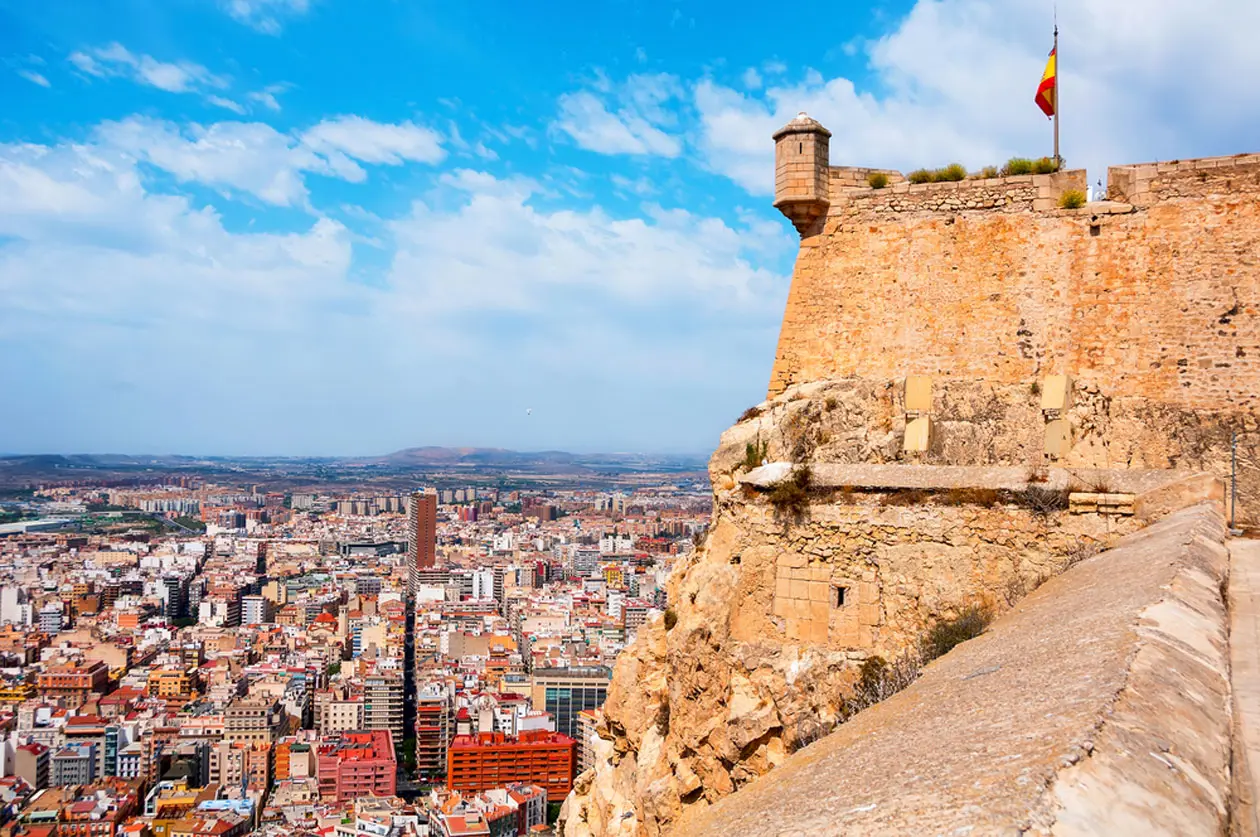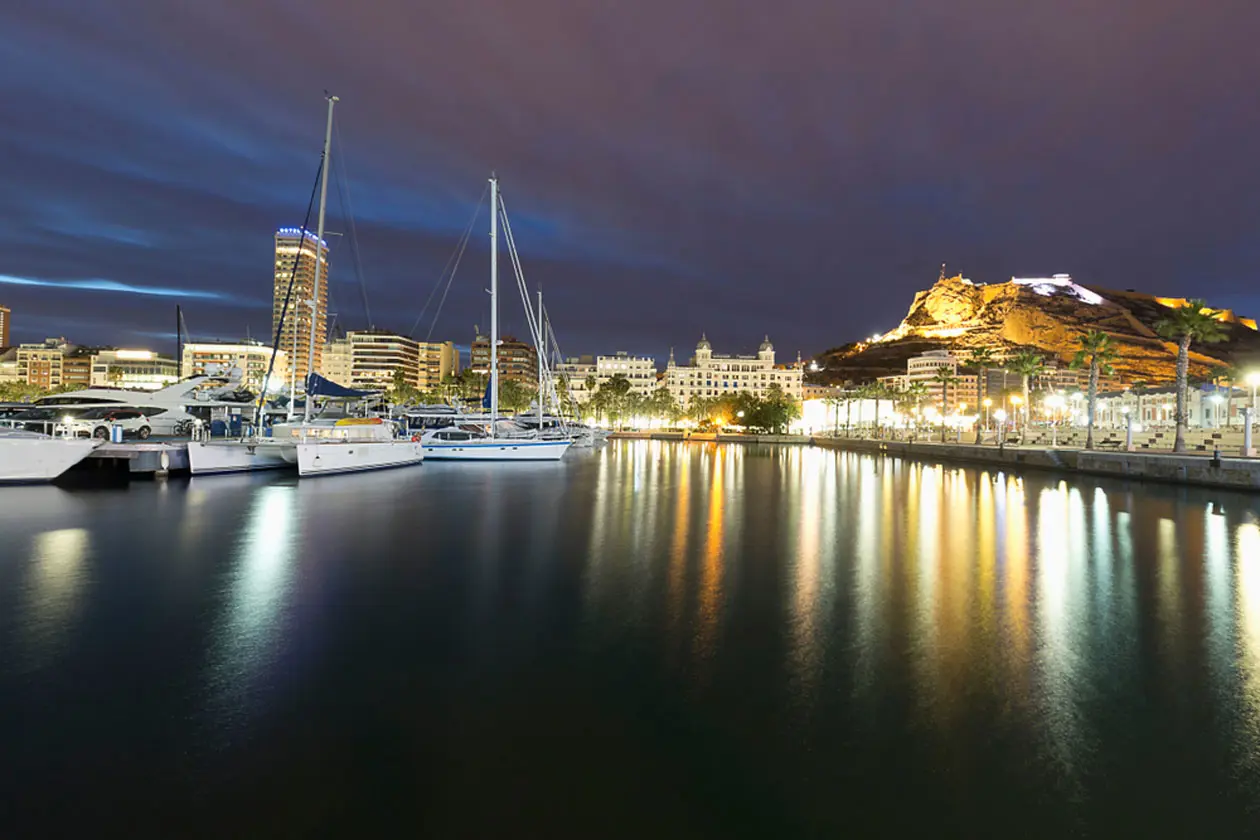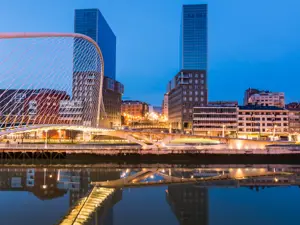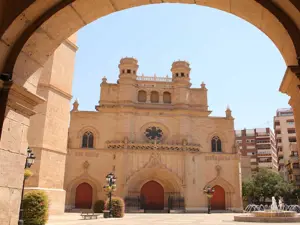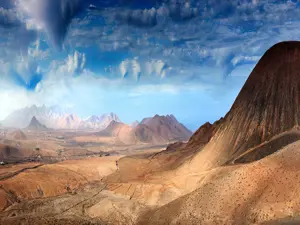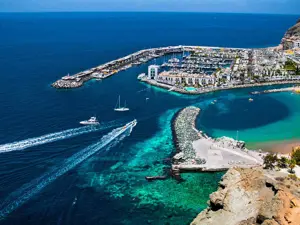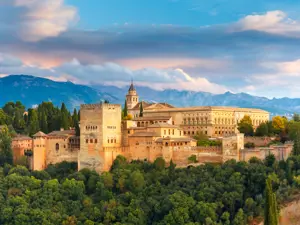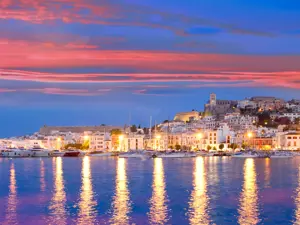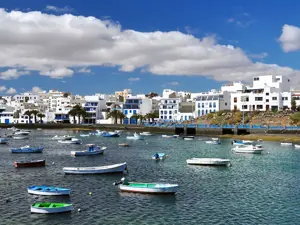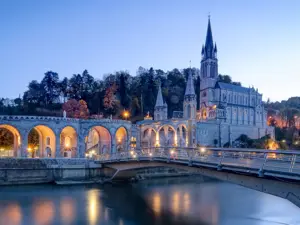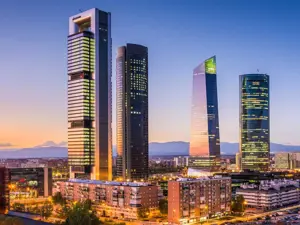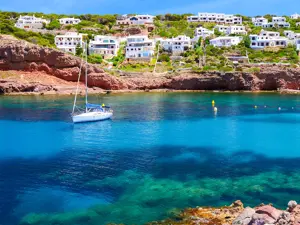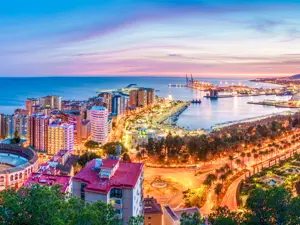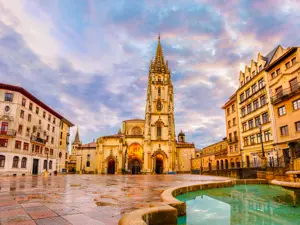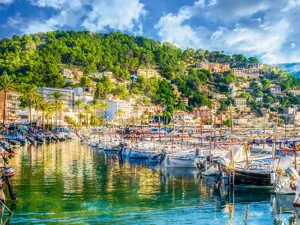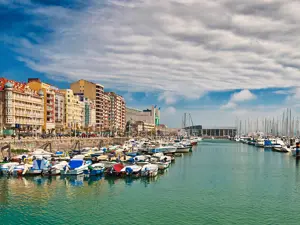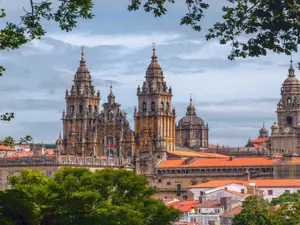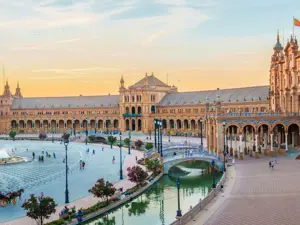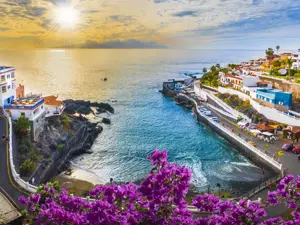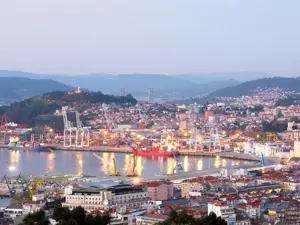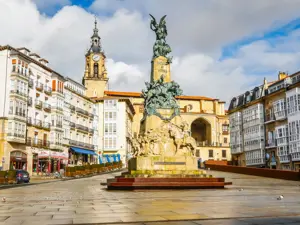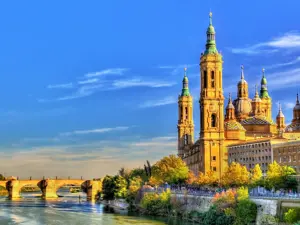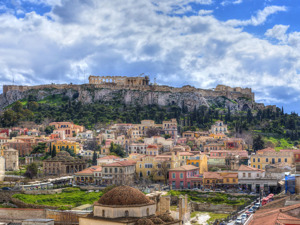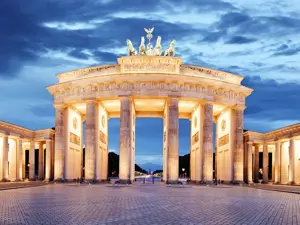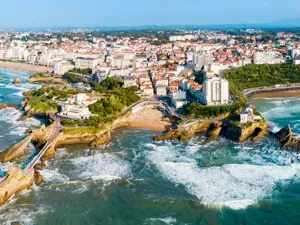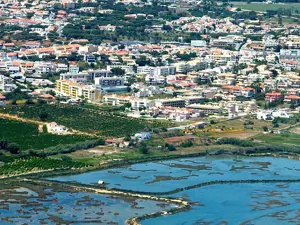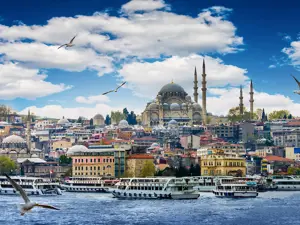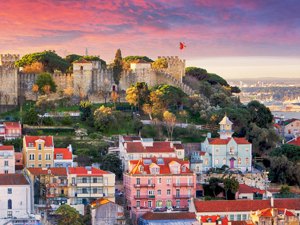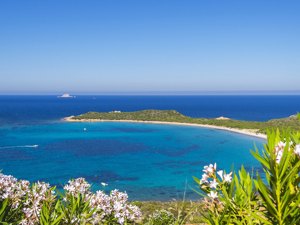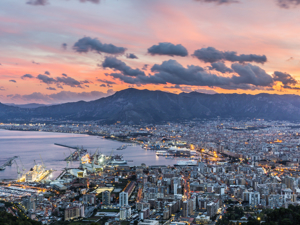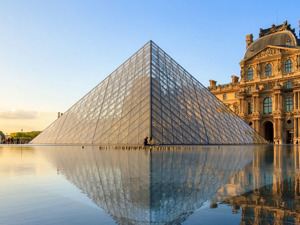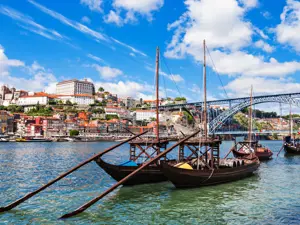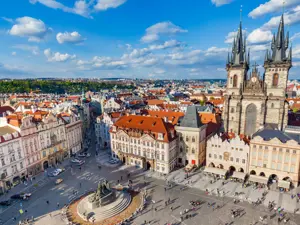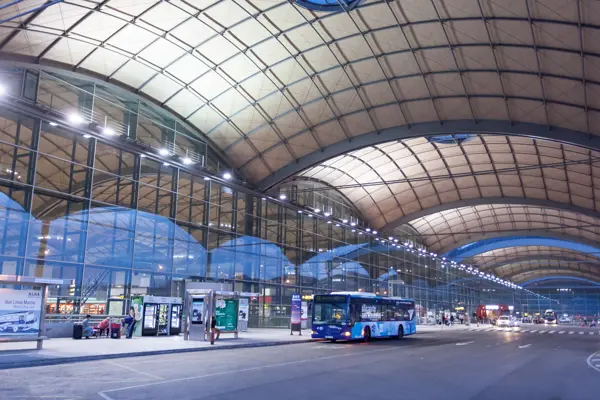Alicante, the heart of the Costa Blanca
Alicante is found in the south-east of Spain, in the south of the Region of Valencia, in the heart of the Costa Blanca. The city features typical Mediterranean landscapes of beaches alternating with mountainous terrain.
Its beaches, which year after year receive the “Blue Flag” award from the European Union, are the major attraction of Alicante. The most famous beaches are those of San Juan, Almadraba, Albufereta, Postiguet, Saladares - Urbanova and the bays of Cabo de las Huertas.

Alicante Copyright © Sisterscom.com, Shutterstock
The islands
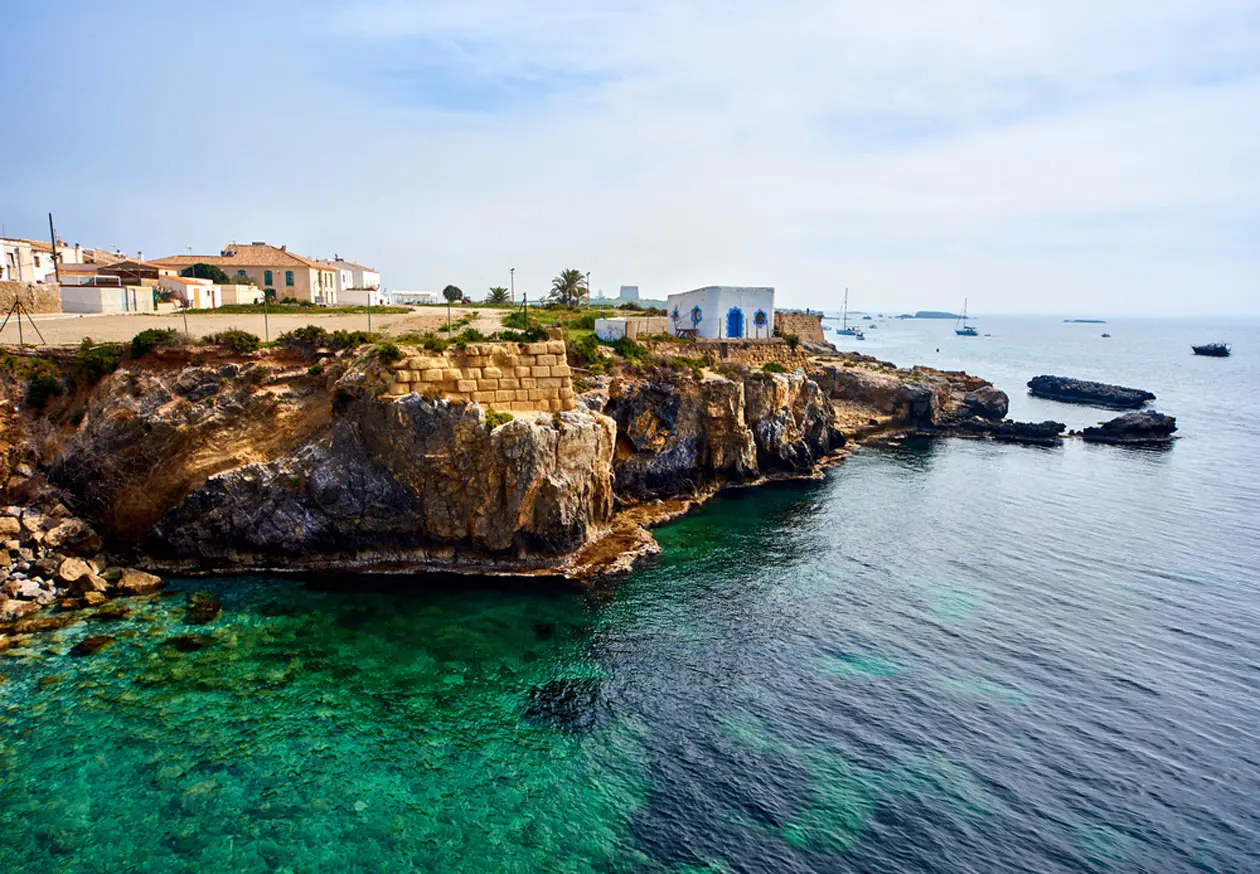
Island of Tabarca Copyright © Sisterscom.com, Shutterstock
The Island of Tabarca is the only inhabited island in the Region of Valencia. It is found in a small archipelago that includes the islands of La Cantera, La Galera and La Nao, right in front of the city, 11 nautical miles out to sea and near the Promontory of Santa Pola.
There are various archaeological sites in Alicante, many of which have been declared World Heritage Sites by UNESCO; but also numerous golf courses, which together with the tranquil waters of Mediterranean Sea, are part of the charm of this beautiful port city. The port, at the foot of the Castle of Santa Barbara, was silent witness to numerous civilisations that became established here.
The historic centre
The historic centre, at the foot of this fortress, hides an interesting religious and civil architectural heritage, the emblematic Explanada de España (Spain Esplanade), a traditional recreational area for local residents.
The civil buildings of particular interest and worthy of a visit are: the Town Hall, the central market, the Maisonnave and Carbonell buildings, the Alicante Theatre or the Teatro Principal, as it is known locally, and the Arniches Theatre.
The religious buildings
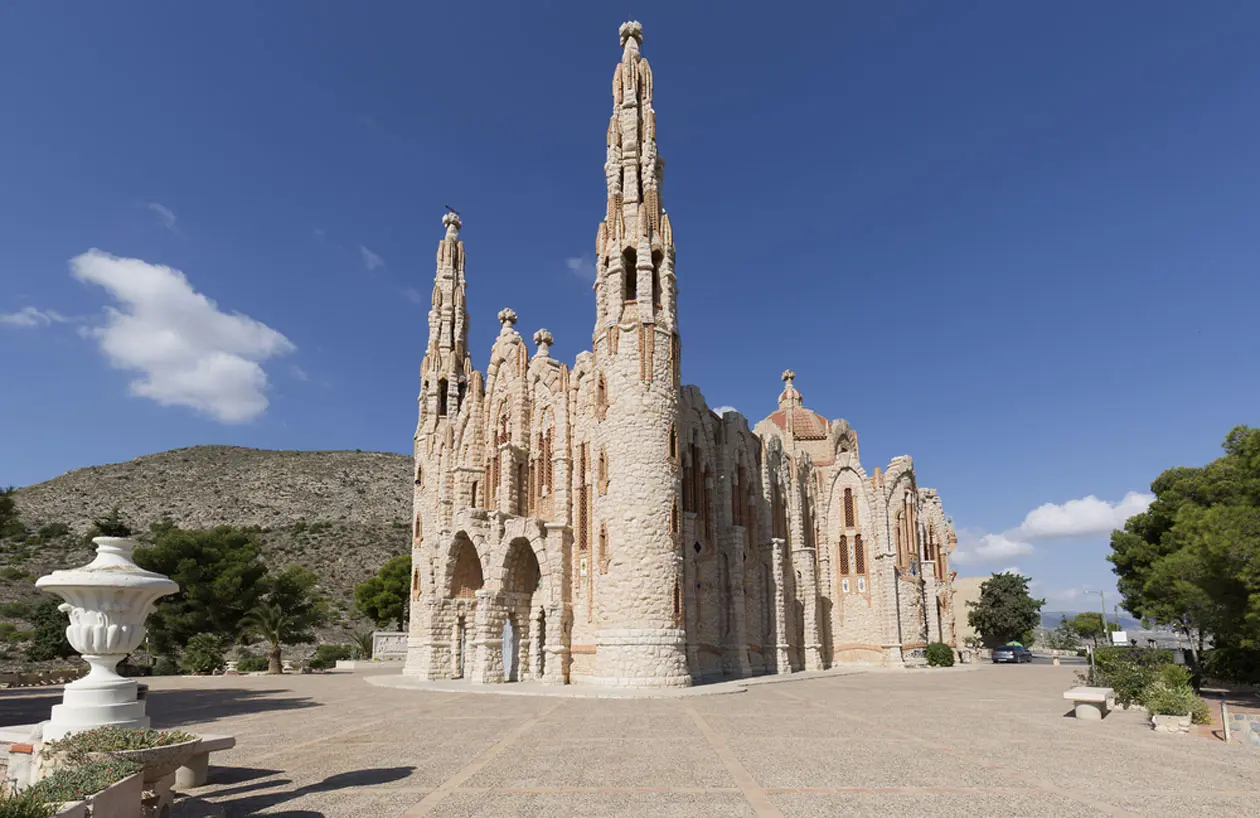
Basilica of St Mary Copyright © Sisterscom.com, Shutterstock
Archaeological site of Lucentum
The archaeological site of Lucentum is also well worth visiting. Situated just 3 km from the centre of the city, in the area of Tossal de Manises, it was the Roman city of Lucentum and has very important archaeological remains.
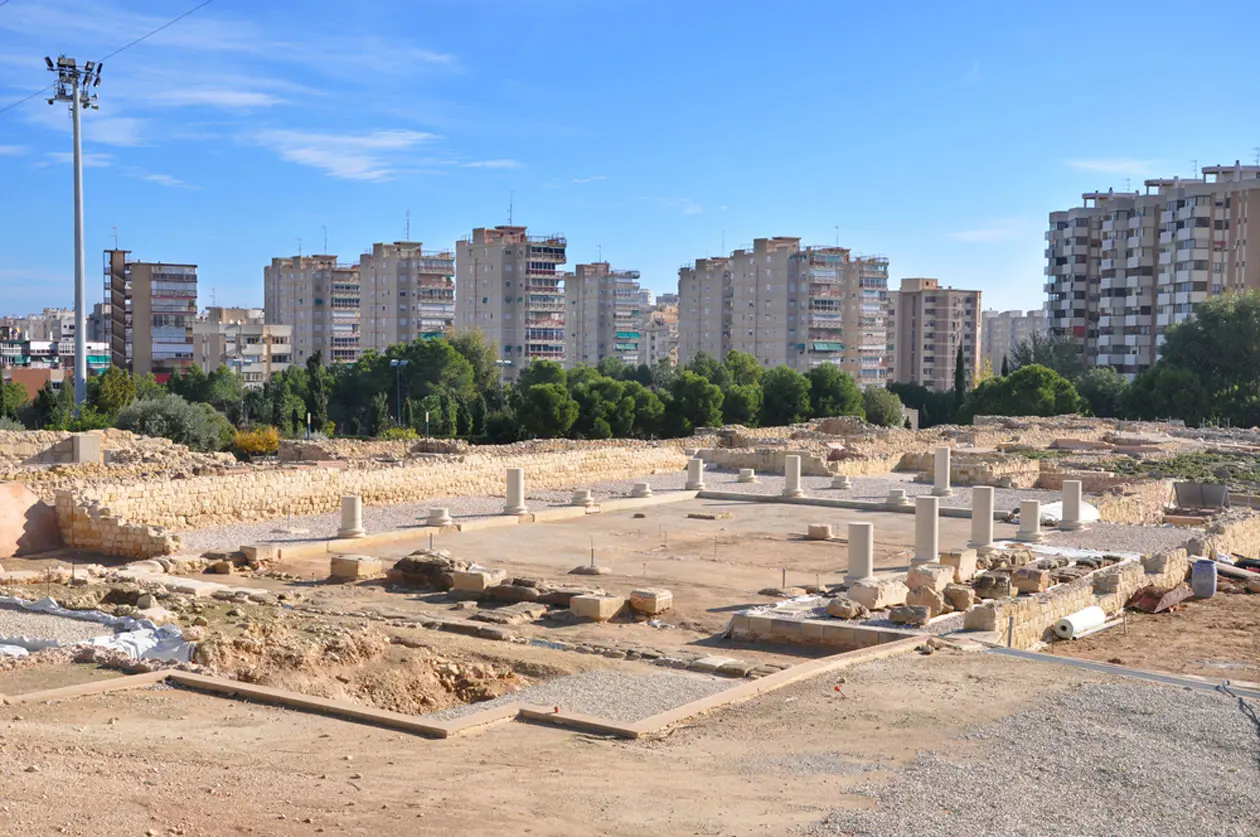
Archaeological site of Lucentum Copyright © Sisterscom.com, Shutterstock
As is the Canalejas Park, which is situated near the sea and the Explanada de España, and is one of Alicante’s most popular parks, famous for its ancient ficus trees that cover the entire length of the park with their shade. Other parks, dotted over the entire city, are pleasant for a break. One of the most striking is La Santisima Faz Square, which is situated behind the town hall, and has tall palm trees and is one of the gateways to the old city.
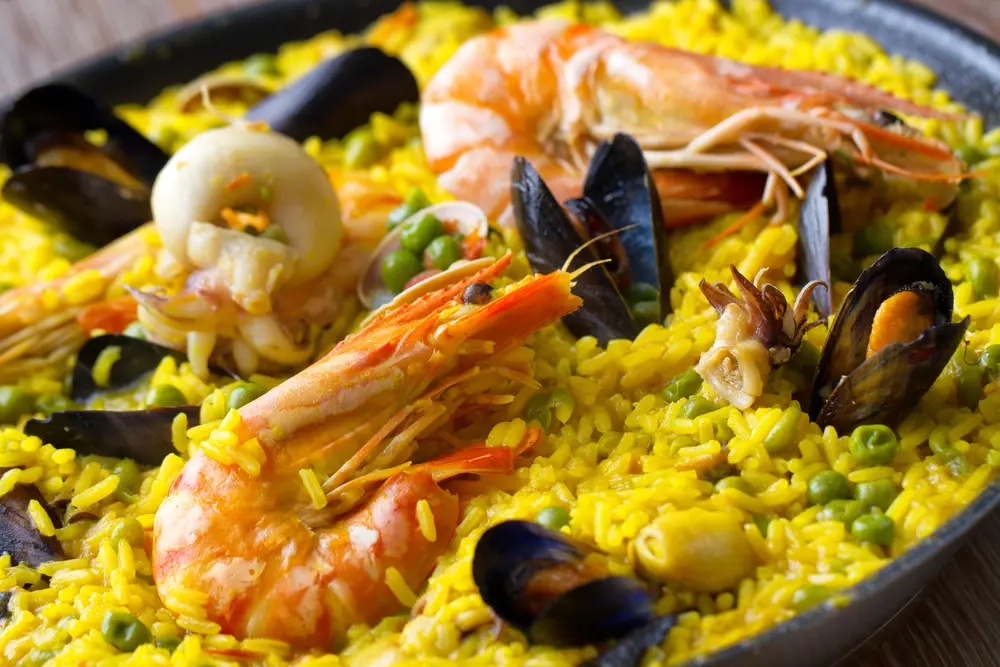
Paella Copyright © Sisterscom.com, Shutterstock
The tipical dishes
Alicante’s cuisine is typically Mediterranean, and the history of the city, its geographical position, the climate and the fertility of the soil confer a richness and variety to the gastronomy of the region. Rice is the staple ingredient of all dishes and plays a leading role in a large number of dishes, combined with chicken, fish, seafood, meat and vegetables. Alicante is also famous for its salty snacks, "saladas cocas", which are based on tuna or sardines, and its "esmorzaret alacantí", a dish containing salted sardines, fried egg and chilli.
Text by Alisè Vitri
Avion Tourism Magazine
Photos: Copyright © Sisterscom.com, Shutterstock
Copyright © Reproduction prohibited.
Tourism Board
www.alicanteturismo.com
www.spain.info
www.spain.info
Partnership with Booking.com
Where to sleep in Alicante
Alicante Copyright © Sisterscom.com, Shutterstock
Alicante is a welcoming city and offers different possibilities for accommodation.
To find the ideal hotel and the best offers you can do a search for the stars but also for districts or landmarks.
DISTRICTS
Hotels in the districts
LANDMARKS
Hotels in tourist areas
AIRPORT
Hotels near the airport
Where to go IN ALICANTE
Monuments in Alicante
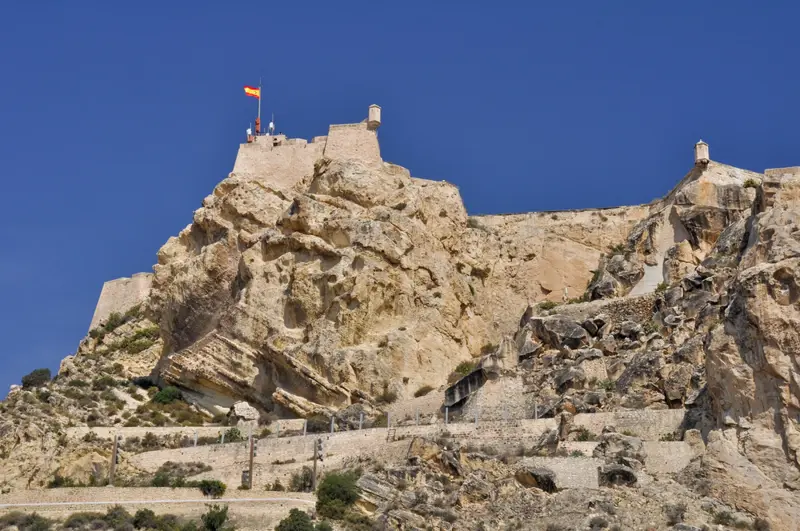
Copyright © Sisterscom.com, Shutterstock
SANTA BARBARA CASTLE
The Santa Barbara Castle is located on the top of Benacantil Mountain, 166 metres above sea level; it gives to the city a great strategic value.
From there, you can see almost the entire bay of Alicante. On its slopes have been found archaeological remains of the Bronze Age, Iberian and Roman, but the origin of the fortress is in the late ninth century with the Muslim rule.
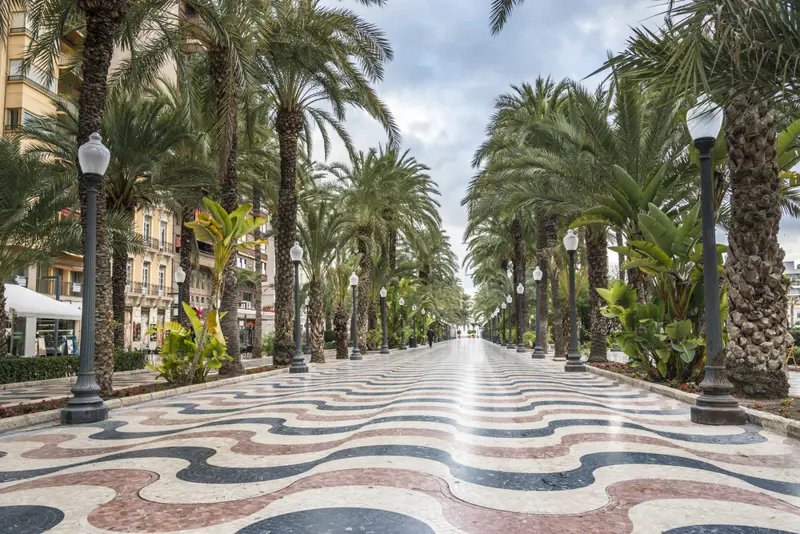
Copyright © Sisterscom.com, Shutterstock
EXPLANADA DE ESPAÑA
Also known as the “Paseo de la Explanada”, this is a maritime promenade that runs parallel to the port, from the Puerta del Mar to Canalejas Park. One of the most popular areas in Alicante. The explanada de España is one of the most famous streets of the city of Alicante and was built on the old dam of the city during the first half of the twentieth century. Is made up of marble tiles that form a mosaic wavy red, white and black. It also has four rows of palm trees that run more than 500 meters in length. On Explanada there are buildings like, Carbonell Casa Real Casino de Alicante and numerous craft shops and souvenirs.
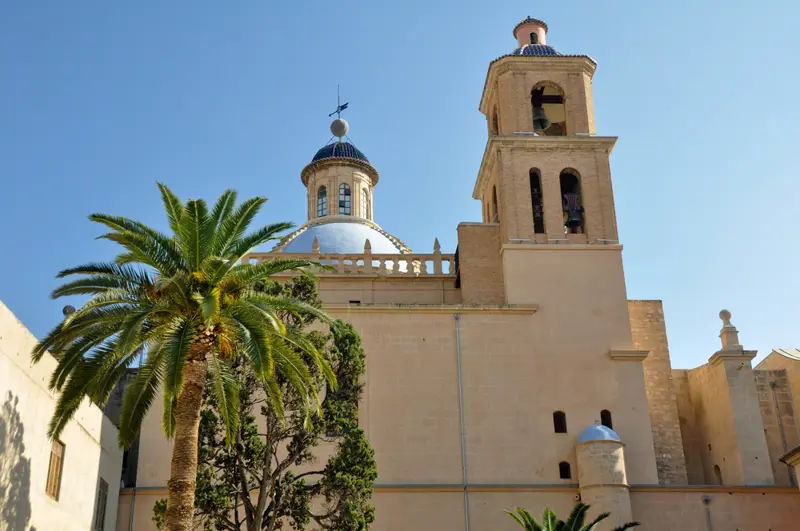
Copyright © Sisterscom.com, Shutterstock
THE SAN NICOLAS CO-CATHEDRAL
The construction of the San Nicolás Co-Cathedral began in the year 1600 and it is built in the Herrerian Renaissance style and is located in the heart of the city. Its floor plan is in the shape of a Latin cross, with an interior that boasts notable features such as the 15th century cloister with two Baroque doors, the altar and the blue cupula 45 metres high. Below the cupola is the Capilla de la Comunión (communion chapel), which is considered to be one of the most beautiful examples of Spanish Baroque.
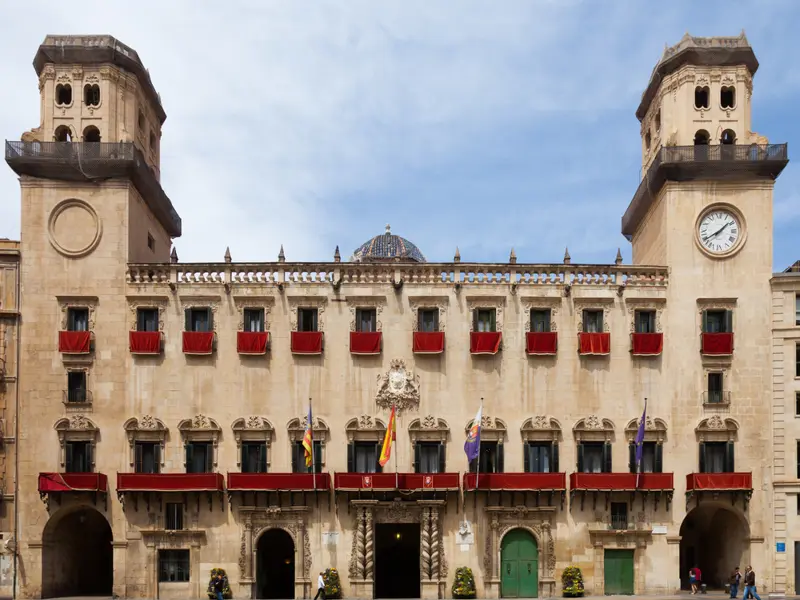
Copyright © Sisterscom.com, Shutterstock
THE TOWN HALL
The Town Hall is a Baroque work of civil architectonics and was designed by architect Lorenzo Chápuli and built on the site of the former city hall in the 18th century. Visitors can admire its ornamental elements such as the barley-sugar columns on the facade or its two towers. Inside there are several remarkable rooms such as the Salón Azul, the Salón de Plenos meeting hall and a chapel.
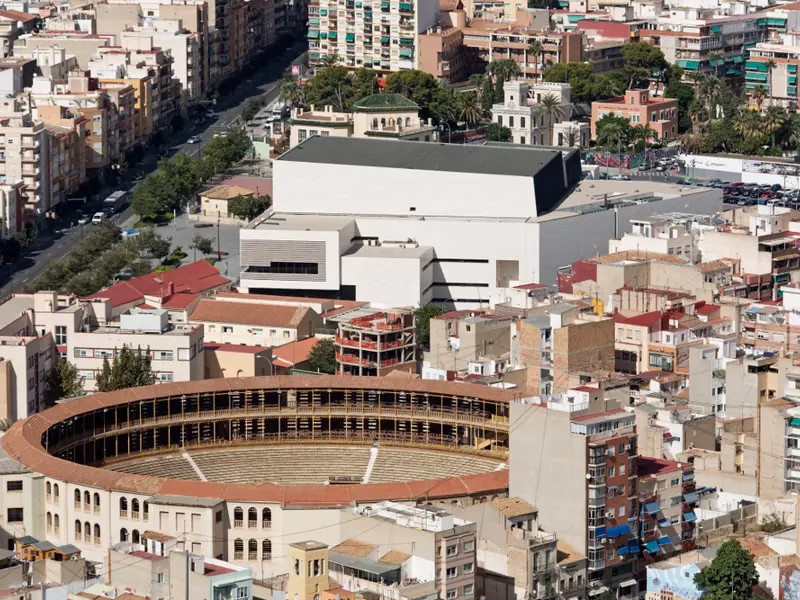
Copyright © Sisterscom.com, Shutterstock
BULL RING
This is one of the oldest working bull rings in the Region of Valencia. Built in 1847 by Alicante architect Emilio Jover, it had to be completely renovated in 1884 due to serious deterioration. Its second architect, José Guardiola, took on this important project and added a second floor with stairs and independent adjacent accesses.
Museums in Alicante
MARQ THE PROVINCIAL ARCHEOLOGY MUSEUM
Created in 1932, the visitors to this highly innovative and visual museum can enjoy an avant-garde approach to archaeology supported by modern audiovisual techniques. Its exhibits stretch from the Palaeolithic through to Contemporary Modern Culture, tracing the history of Alicante.
FOGUERES
FESTIVAL MUSEUM
This museum explores the evolution of Alicante’s most representative festival, the Hogueras de San Juan bonfire celebration held in June, which has been officially declared as of “Interest to International Tourism”. Here visitors can see collections of “ninots indultados” (the effigies that managed to escape the flames), mock bonfires, typical costumes, etc. The museum also boasts an audiovisual hall showing clips of this festival from years ago.
MUA
UNIVERSITY OF ALICANTE MUSEUM
Devoted to Contemporary Art, this museum was opened in December 1999 and is located on the campus of the University of Alicante in the nearby town of San Vicente del Raspeig. The main aim of the MUA it is a space for fostering and sharing culture, bringing together art, music, theatre, cinema, photography, archaeology and research.
Exscursions in Alicante
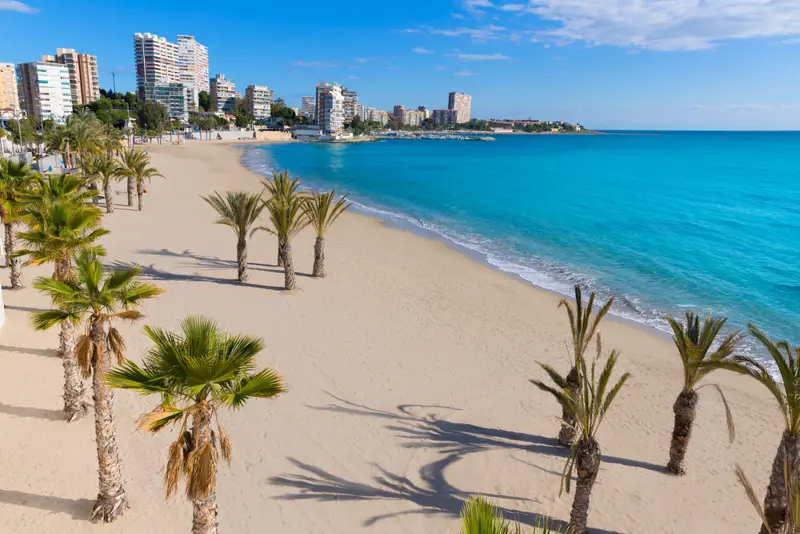
Copyright © Sisterscom.com, Shutterstock
SAN JUAN BEACH
San Juan beach is Alicante’s most famous beach and it is an open beach with very high-quality fine sands. All along the beachfront there are all kinds of restaurants and beach bars and very close to the beach there is the golf course called Alicante Golf, as well as areas reserved for various sports such as beach volleyball, football and windsurfing.
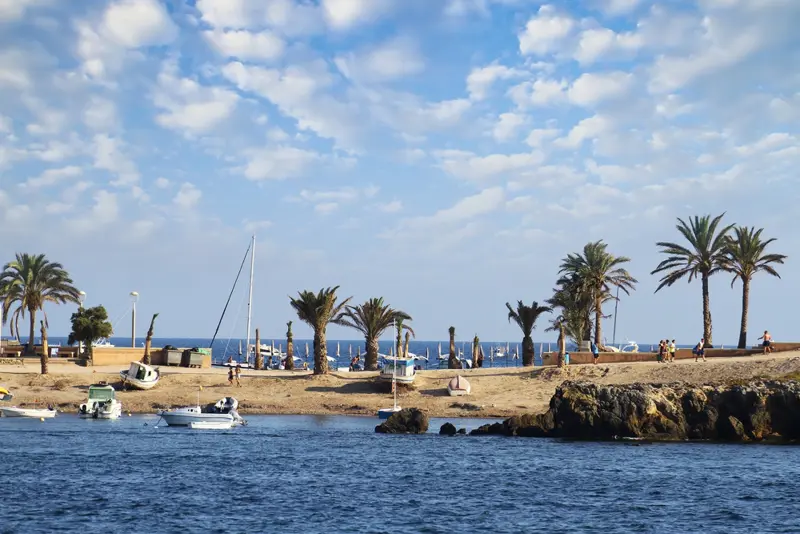
Copyright © Sisterscom.com, Shutterstock
TABARCA ISLAND
Tabarca is the only inhabited island in the Region of Valencia and is located opposite the city of Alicante, 11 nautical miles offshore and near the Santa Pola headland. In fact, it’s more than just an island: it’s a small archipelago that comprises the islets of La Cantera, La Galera and La Nao as well as the Isla de Tabarca itself. The island’s waters are officially declared a Mediterranean Marine Reserve for their excellent quality and for the biodiversity of their flora and fauna. The island can be reached from Alicante Harbour.
Partnership with GetYourGuide
Tour and excursions
News & Useful info
You might be interested in
Destinations found in the vicinity
Other destinations
Airports nearby Alicante

